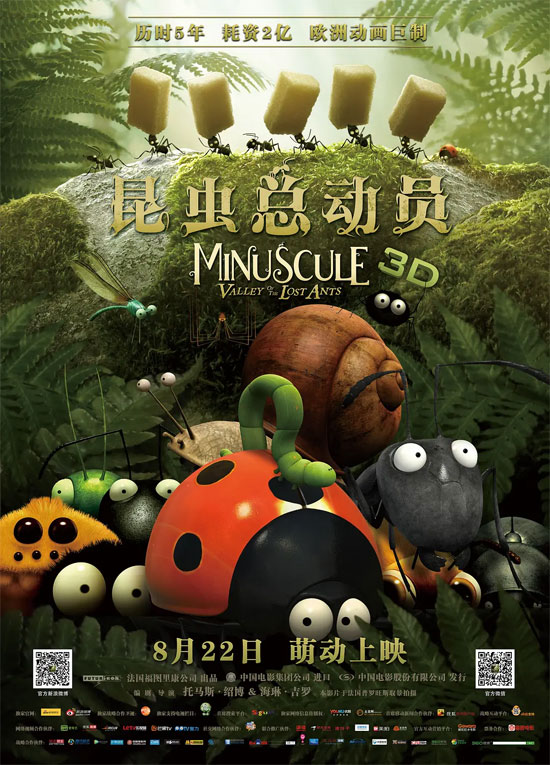Film Name: 昆虫总动员 / Minuscule: Valley of the Lost Ants / Minuscule: la Vallée des Fourmis Perdues

No time for long reviews? Check out these short takes!
====================
The film has no dialogue, yet it seems to speak volumes.
Its most remarkable aspect is that the plot is actually brimming with countless possibilities—the film simply chooses one of them.
The soundtrack is fantastic!
The first half masterfully employs the uncertainty of an open-ended narrative strategy, while the latter half returns to genre conventions—which is why the first part captivated me more.
The film blends stunning real-life French landscapes with CG-animated insects, lending tangible authenticity to these fictional characters and their story.
====================
This is a film entirely without dialogue—or more accurately, without human dialogue—yet it seems to contain a thousand words. Sometimes, what remains unsaid resonates far more deeply than what is spoken outright.
“Minuscule: Valley of the Lost Ants” is an animated film with a peculiar aesthetic I rarely encounter. Its most striking quality is that the plot brims with countless possibilities, yet the film chooses just one of them. Unlike many American blockbusters where the ending feels predictable from the outset, this film keeps you guessing well into its first third—where the story will lead, how its protagonists’ fates will unfold. Some may find the opening slow due to its ambiguity, but I’d argue this very uncertainty represents a fresh narrative approach worth exploring. Such open-ended storytelling may well become the future of filmmaking.
In fact, this uncertainty during viewing creates a sense of bewilderment in audiences. This bewilderment stems entirely from their prior cinematic experiences; yet, subtly, viewers also feel a small thrill. This excitement arises precisely from the distinct sense of mystery experienced while watching this film, unlike any other they’ve seen before. This mystery naturally aligns with the film’s central theme.
Nature is a union of inevitability and chance. A bird eating insects is inevitable, yet which insect it consumes is chance. The combative red ants and docile black ants will inevitably clash—this is inevitable; but that a human gathering ignites this war, and a ladybug born with a flaw determines its outcome—these are chance. Rather than a sonata performed by insects, the film is a symphony composed by nature’s interweaving of inevitability and chance.
Personally, I favor the first half of the film. The candy and the box—two props imbued with boundless imagination—become the stage for ladybugs, black ants, and red ants to perform a grand drama filled with affection, loyalty, courage, wisdom, peril, and wit. The black ants’ unequal distribution of sugar cubes—their leader all talk and no action, leaving one ant tragically burdened with six cubes—their long-range antenna communication, and their philosophy of “paying to avoid trouble” all struck me as wryly humorous. The latter half, however, devolves into the tired trope of a passing ladybug becoming a tribal hero, undermining the film’s earlier sense of unpredictability. In truth, the moment I realized the story was ultimately steering toward a war between black and red ants—and that the ladybug wasn’t merely a transient figure in the ants’ lives but central to their conflict—the film had already concluded for me.
The ladybug character is deeply poignant, especially in its countless dreams of being with family—a stark contrast to its lonely, isolated reality. As an abandoned “orphan” with damaged wings, enduring the humiliation of flies and the loneliness of cold, bitter rain, it’s hard to fathom how it could retain such a pure and kind heart. Yet this is precisely the greatness of this tiny ladybug.
Please specify:Anime Phone Cases » Minuscule: Valley of the Lost Ants 2013 Animation Film Review: The beauty of an uncertain future